Formby is quite unusual for two reasons. First, it is a links bounded on three sides by trees. Second, it encircles one of the oldest ladies clubs in the country, Formby Ladies GC. FLGC is a charmer and nearly as old as Formby GC, which was formed in 1884. The main course was originally designed by Willie Park in 1912, but a myriad of designers have had a hand in Formby's evolution. These include Braid (1922), Colt (1926), and the teams of FG Hawtree & JH Taylor (1933) and Pennink & Steel (1980). This evolution has continued in fairly recent years with bunkers being altered and moved to cope with the modern game. Even with many hands in the till, Formby presents a varied, yet unified design. There is no defined style of shaping or design mantra, therefore holes such as 6, 11 & 15 are not out of step with newer holes such as 7 & 8. Formby is well thought of as a championship test and has hosted the Amateur four times. In 1987 JM Olazabal beat C Montgomerie in the final. Most recently, in 2009, M Manessaro became the first Italian to win the Amateur. As can be the case, the pedigree of championships doesn't lessen the undeniable charm of Formby. Its combination of heather, firs and sandy turf make for a standout course among the many Merseyside links.
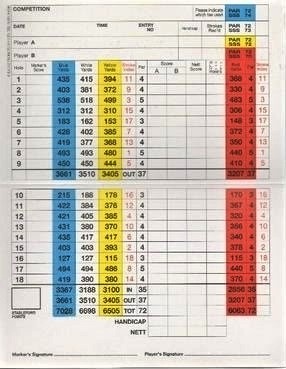

Freshfields Station is a short walk from the club gates and the tracks feature on the opening three holes which in the old days were known as the plains. The effect of the plains was dramatically reduced when In the 1970s trees were planted to block out the train line. Perhaps the club should reconsider this decision and instead embrace the history of the area in the way many clubs in Great Britain & Ireland do. The plains are defined by the bunker placement and are fairly straightforward with the strategies self evident, though they do require some playing to earn pars.
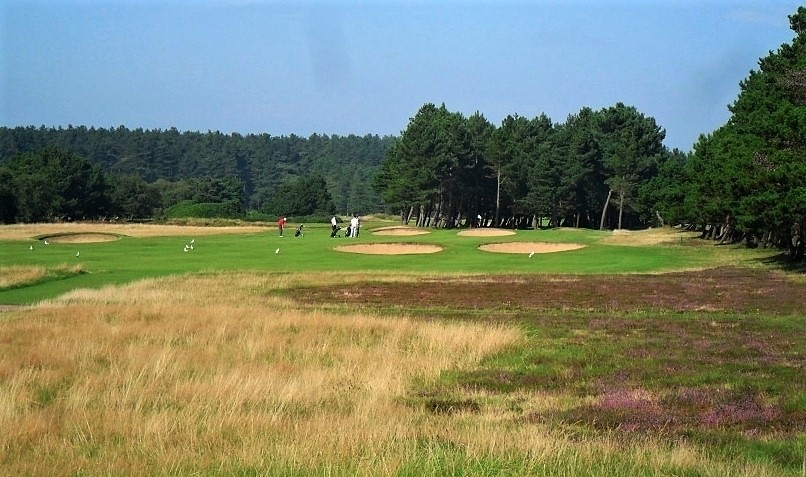
The second is not unlike the 1st in how it looks, but it plays very differently. Heather creeps in from the left and a raised green makes for interesting recoveries. Not long ago the right fairway bunkers were shifted left to narrow the driving lane. There have been other bunker changes on the course such as a new bunker on #7, but mainly shapes have been made more circular.
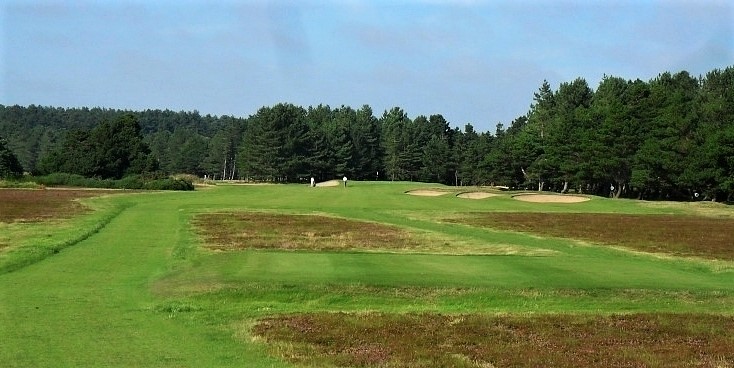
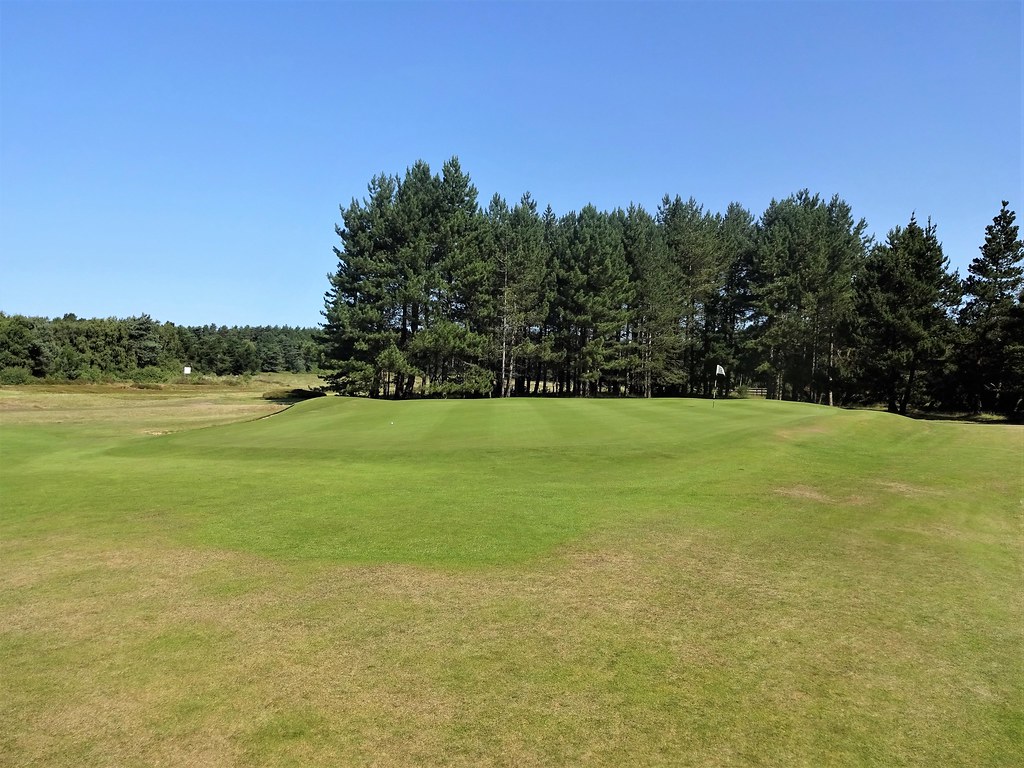
The course really comes alive with the 3rd. The bunkers are still the defining element of the hole, but this wonderful short par 5 oozes with options off the tee and for the second. Five ill-defined bunkers guard the left side of the fairway essentially making the player choose his bite size.
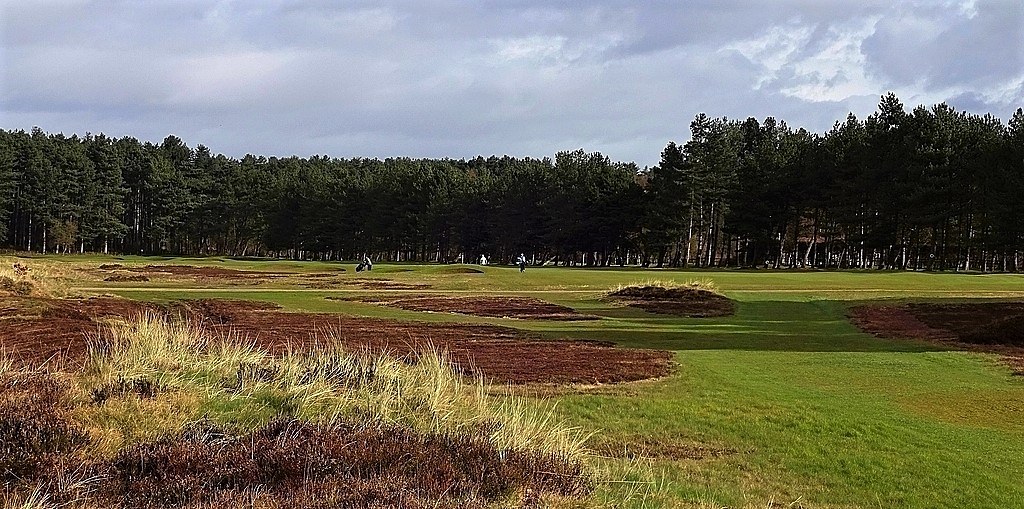
A good drive leaves the player with the option of trying to force a shot home, layup short of the bunkers or try to carry the centre bunker (pictured below), but still layup. This picture reveals how punishing the bunkering is, but it doesn't reveal the sly nature of the green - it runs front to back making it very difficult to snuggle up to the flag with the third let alone second.

The short par four 4th has hidden bunkers out to the right to protect against gaining the best approach angle too easily. The bunkers near the green obscure the view for the approach.
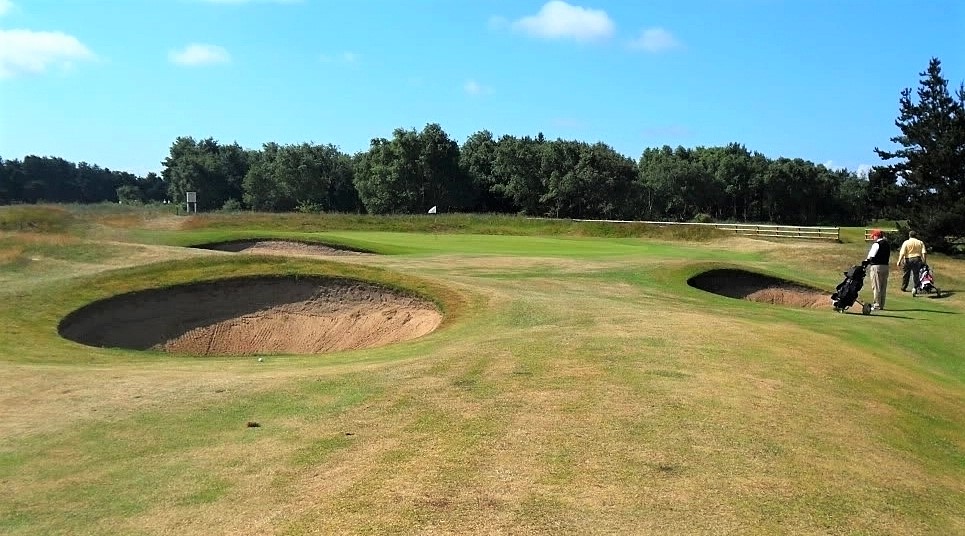
The original Colt 5th is a lovely short hole. The green angles away from the tee making rear hole placements particularly tough to access.
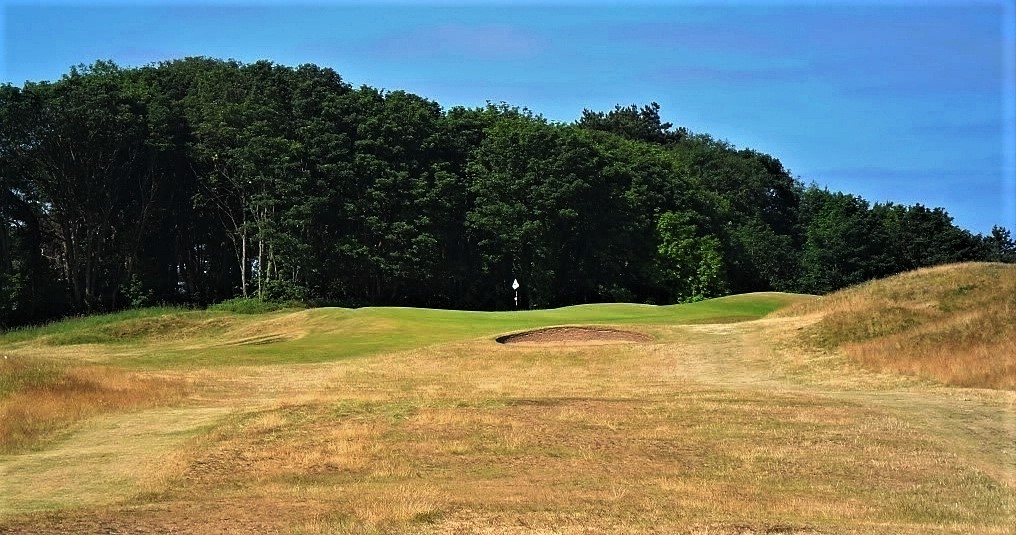
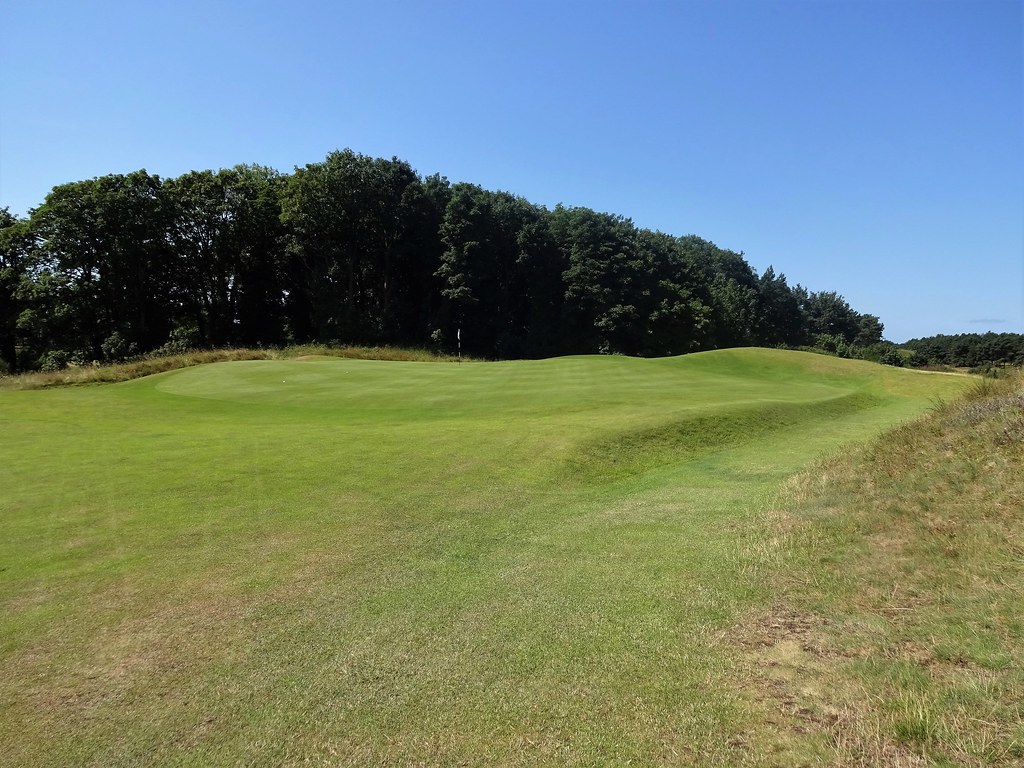
Things start to really crank up on the 6th. The hole slips to the left and features a blind approach to a tricky green with a ridge running through the left side. This must be one of the original holes Park designed. The deception off the tee is marvelous. One can guess there is more room left than it appears, but how much more?
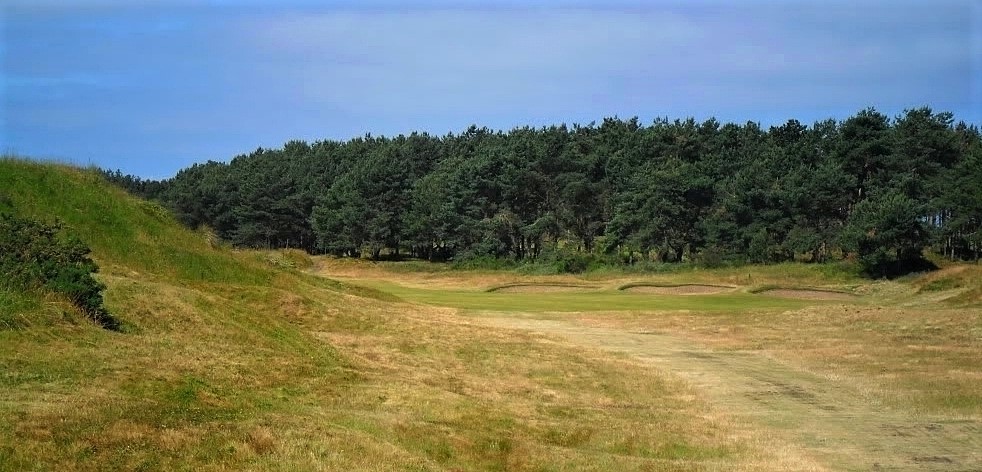
The blind approach covers some rough ground to a green which looks like a punchbowl but doesn't play like one as the left side falls-away.

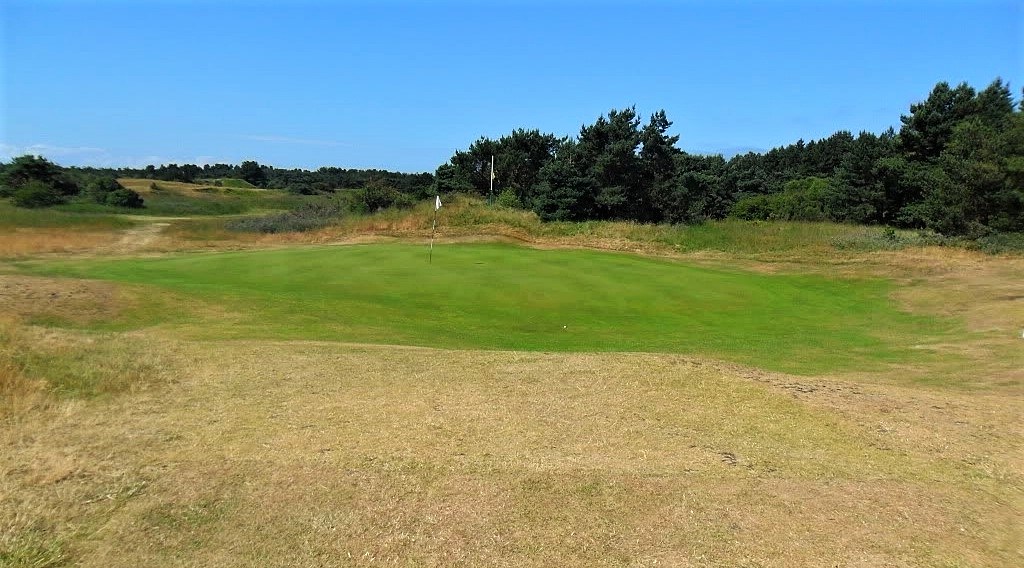
Steel & Pennink carried out major alterations to holes 7-10 in the late 70s. I never saw Formby in its previous state, but it is difficult to imagine the old stretch was more compelling than these new holes. As a group they are well conceived and over terrific land. It makes me wonder why this land wasn't originally utilized. The 7th kicks off the new section of the course, but the 5th and 6th flow seamlessly with these newer holes.
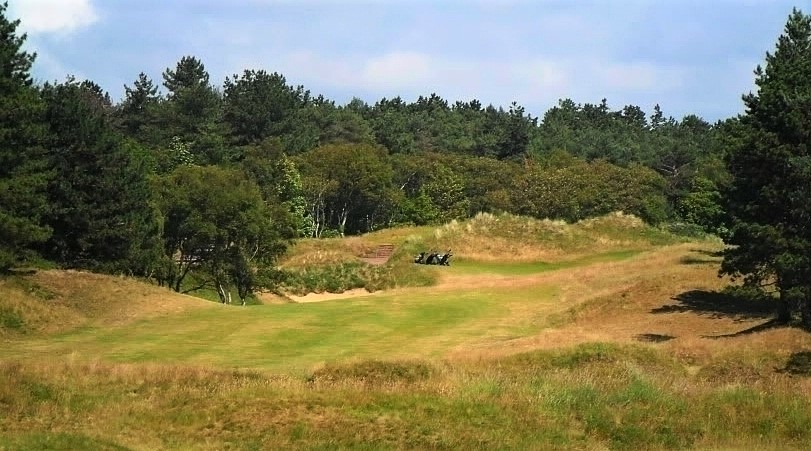
A good drive to the left affords a view of the green, but one may be left with the ball below their feet. A better stance can be had out to the right, but the approach is blind. The strongly sloping back to front green lies amidst the dunes and is a tough target. This is a great example of a virtually bunker free hole that is very entertaining.
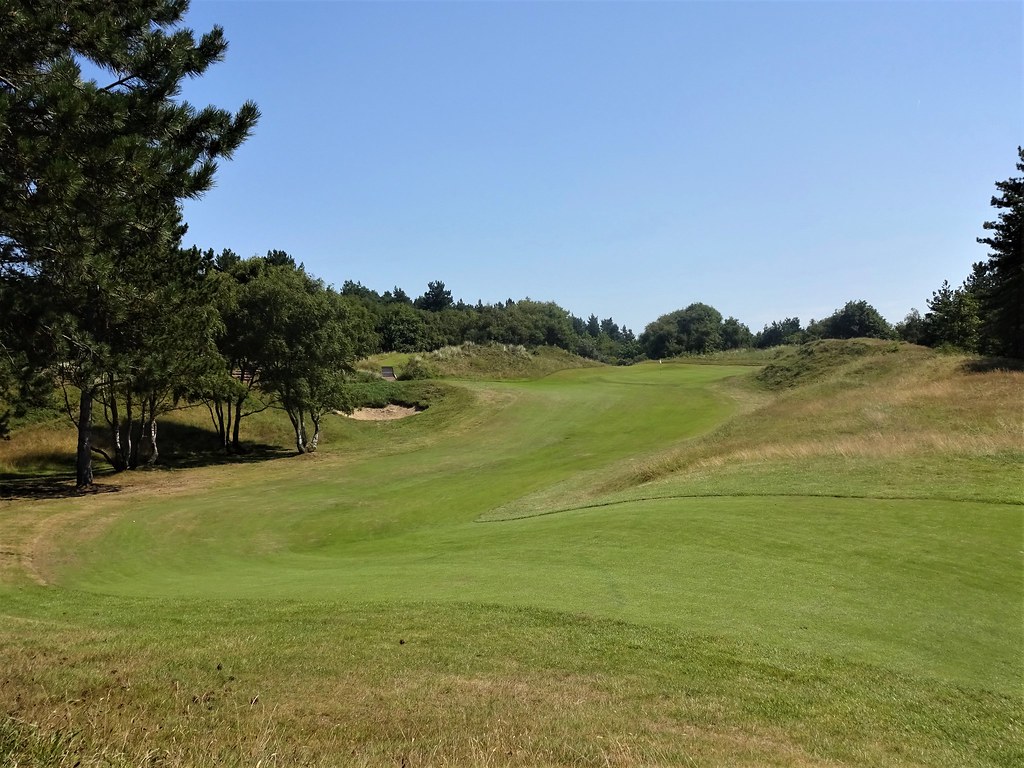
This photo looking back up the fairway reveals the snaking and uphill nature of the hole.
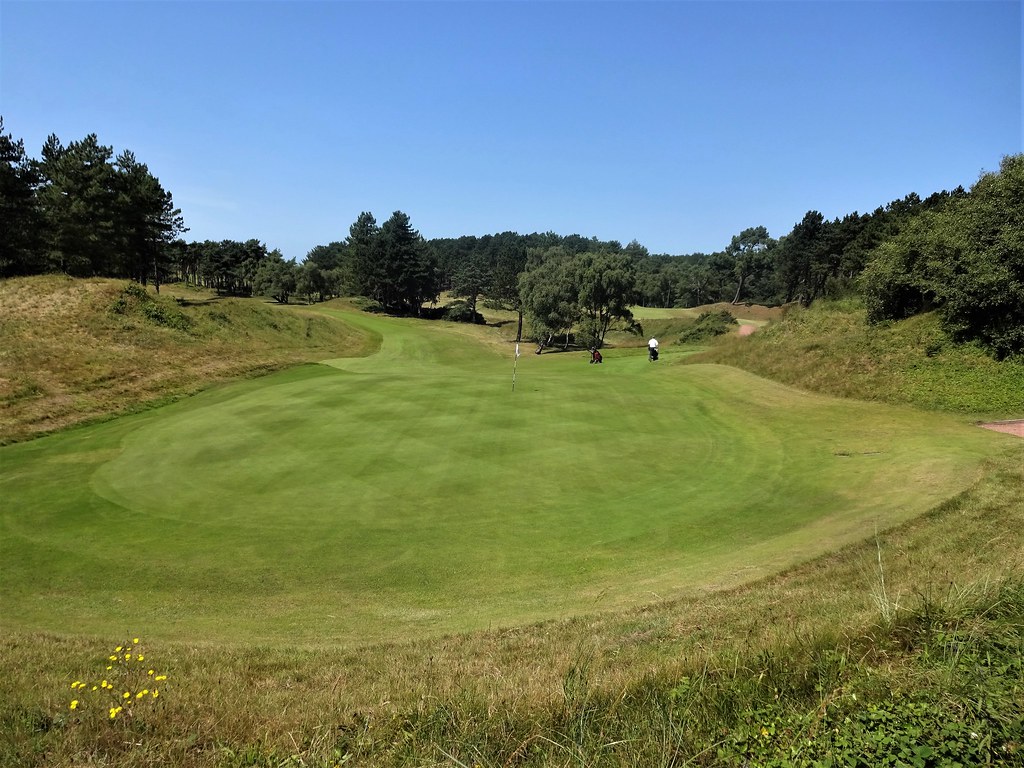
The long holes at Formby are rarely mentioned as an oustanding set, but when taken as a whole, all three are very different and well designed. The 8th is a fine par 5 turning back on #7. It is very easy to leak one over the fairway ledge on either side; in this respect the drive is not unlike Rye's 4th. The smart play is a layup, but an aggressive play up the left or hooking with the contours can leave a mid-iron or less to the green. The approach is all carry and depth perception is difficult.
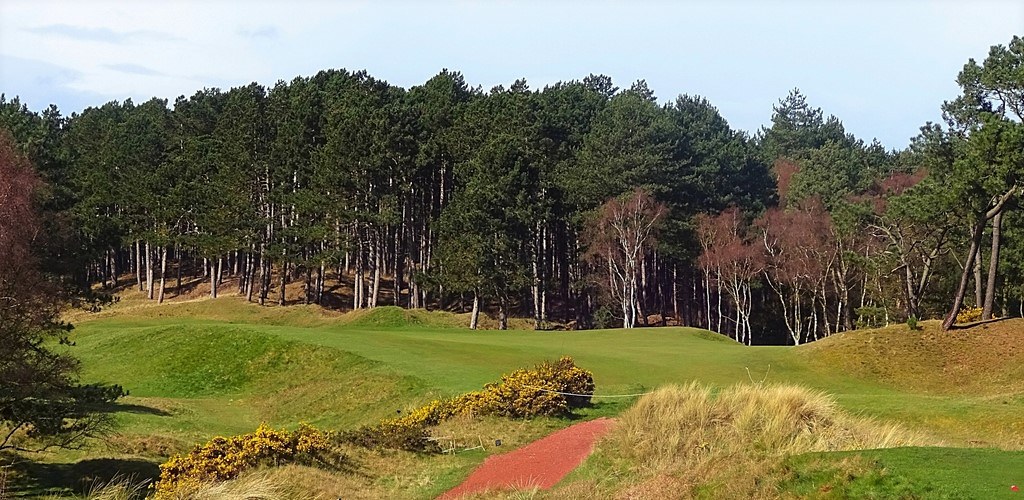
A big drive can finish in the rough which breaks the fairway some 190 yards short of the two-tier green.

A look at the green from near the 9th tee.
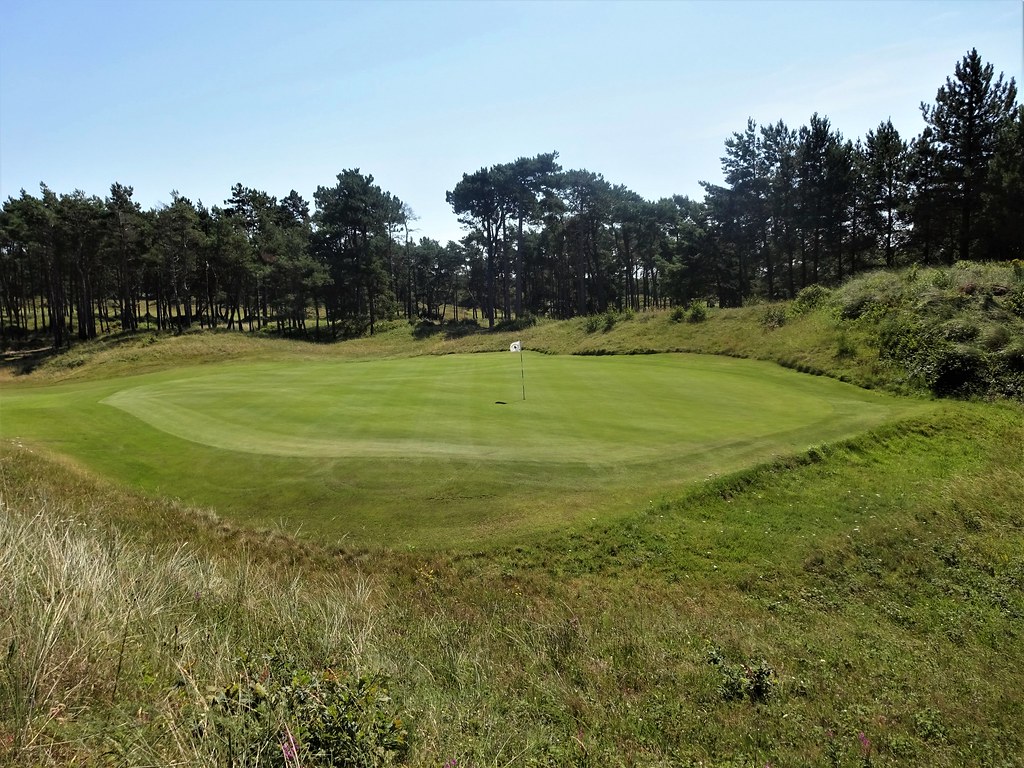
The 9th is unusual in that a wide vista is on offer on the tee and has been made especially inviting due to tree clearance on the right which offers views to the sea. A false dogleg is created by the cut of the fairway and many folks are lured off line to the right.
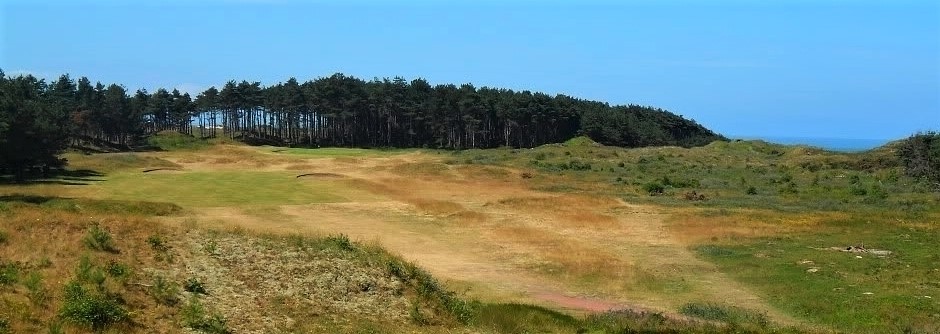
As on the 6th the approach is once again obscured by broken ground. This is a very clever technique which is effective yet simple to implement.
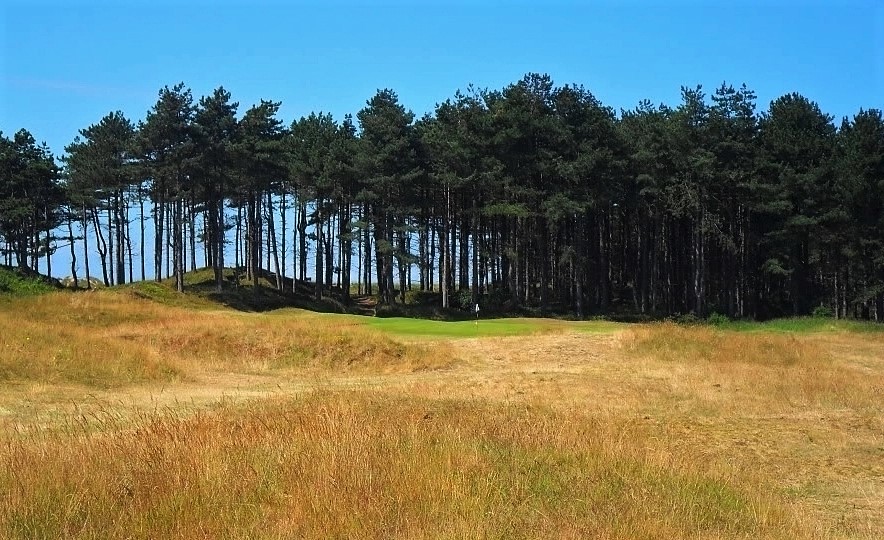
There is oodles of space to run a ball up. I believe the old 7th green was just shy of the current green. The course used to play to the sea after the 7th before coming back to a green just to right of today's 10th green. The old 8 & 9 greens were swallowed up by the beach. They looked to be fine holes judging by old photos.

I believe a fairway from right of the 10th tee used to play to the greensite of this converted par 3. We are at the furthest extent of the course which still allows a view of the land by the sea that was abandoned for the new holes. Its a shame there are only three short holes, but like the par 5s, a fine variety is on display and one couldn't point to any as a weakness.
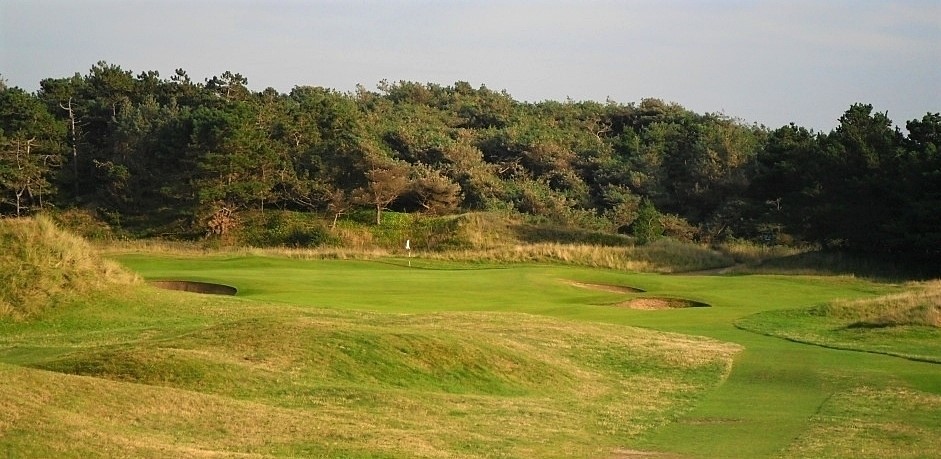
The 11th continues the great fun that is Formby. There is a blind bunker left to keep folks honest, a re-occuring theme at Formby.
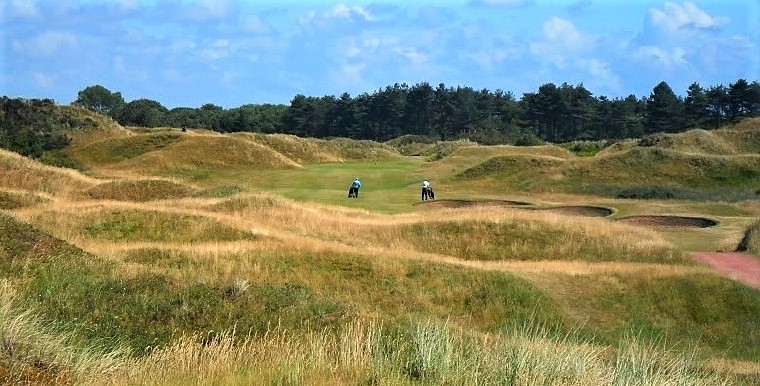
The approach is quite daunting as it seems to narrow the closer one gets to the hole. Below is a look at the approach and the rather unusual step-up just shy of the green.
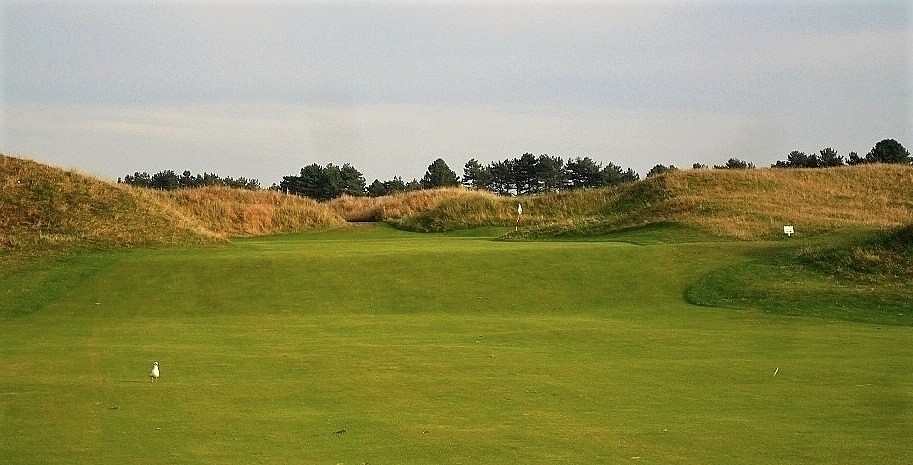
A look back toward the tee.
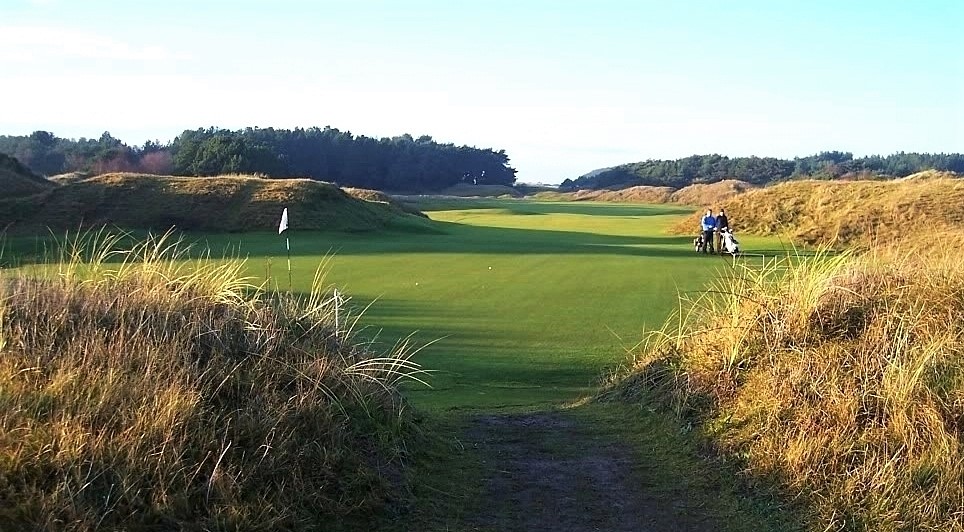
From here there are more quite radical differences to the 1912 layout. Formby doesn't let up...another Colt original, the 12th is a cracker with the fairway narrowing and plunging out of sight. I think the bunker to the right used to be blind and that a bank near the tee may have been shaved. Like a handful of other holes on the course, there is a rise in front of the green and a hidden bunker left.
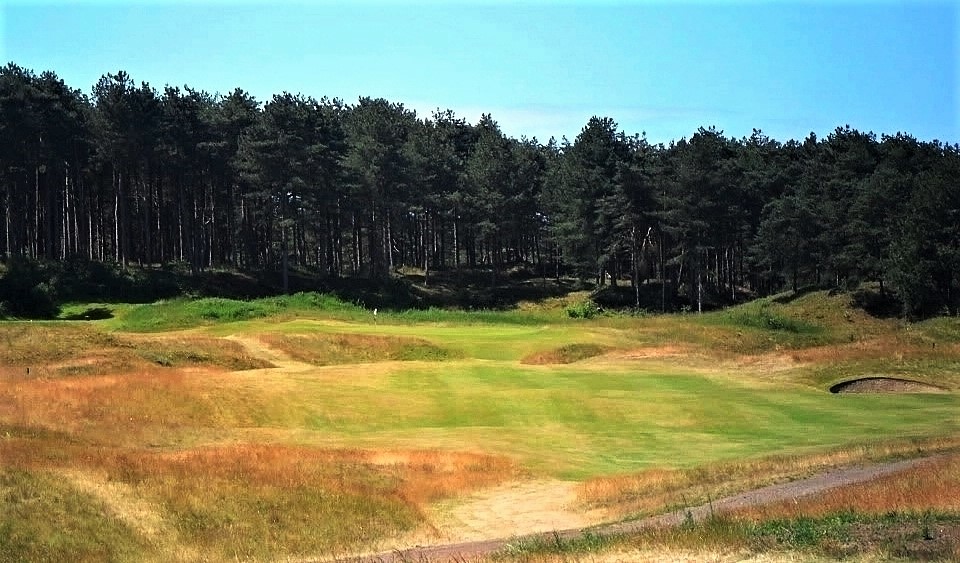
The 13th takes us back toward the house and to one of the coolest fairways on the course. From the tee you only see a few bunkers. Once over the slight rise one can see a sea of sand. The green rests in a saddle between the dunes.
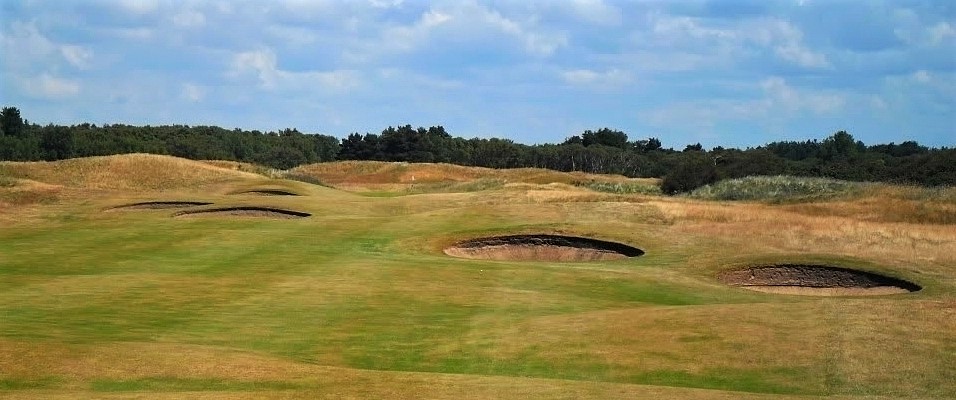
The approach from up the gut of the fairway.

The green.
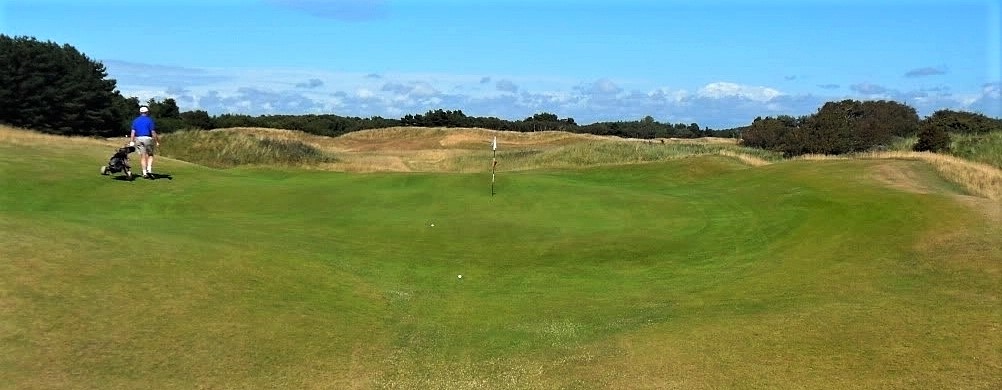
The 14th continues back toward the clubhouse. From the tee it looks like the player wants to hug the left to shorten the hole. The left may leave a shorter approach, but it can also leave an awkward angle or a blind shot...choose your medicine. You instead of playing around the right of the practice ground, this used to play through the practice ground as a fairway then bend right.

The hole swings harder left than it would seem. The green is also a tough target as it angles slightly away from the fairway.
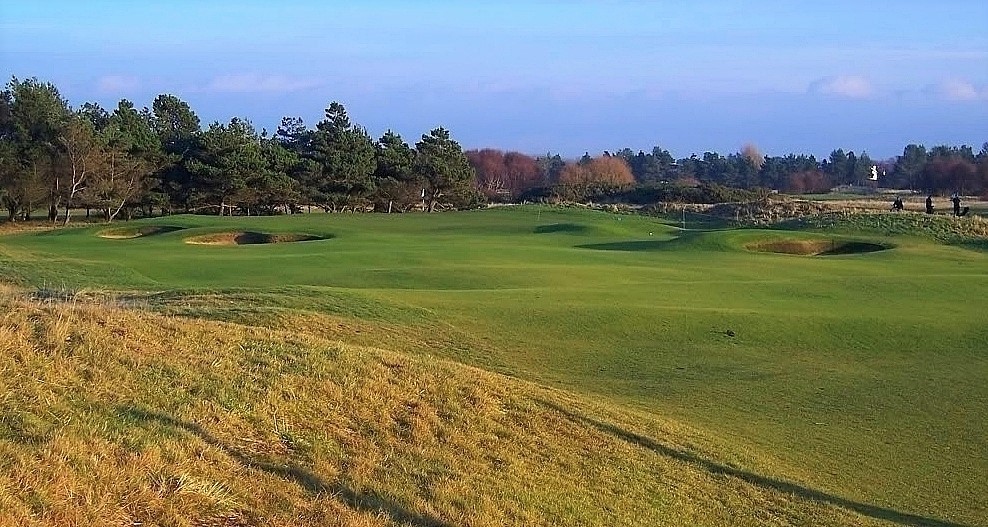
A post 1912 hole, the 15th turns away from the clubhouse. One can sense that the second will be blind. Laying up isn't a bad option as anything falling off the fairway in either direction more or less leaves a hack back into play. By my count that is a 13 hole stretch of damn near the highest quality. A golfer will be hard pressed to see such varied terrain and shot making requirements as holes 3-15 offer.
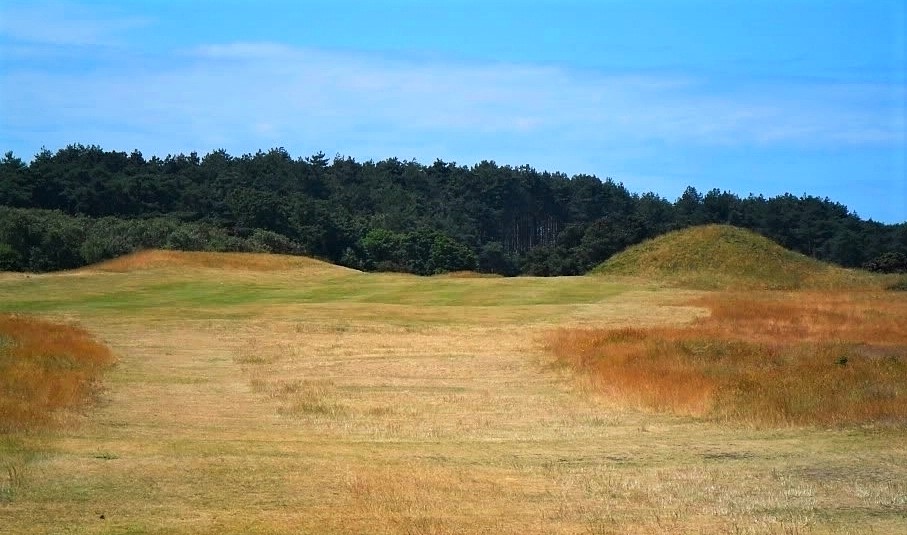
The approach can often be blind over yet another broken fairway and to a green between sentinel dunes. A large drive is required to earn the view below.
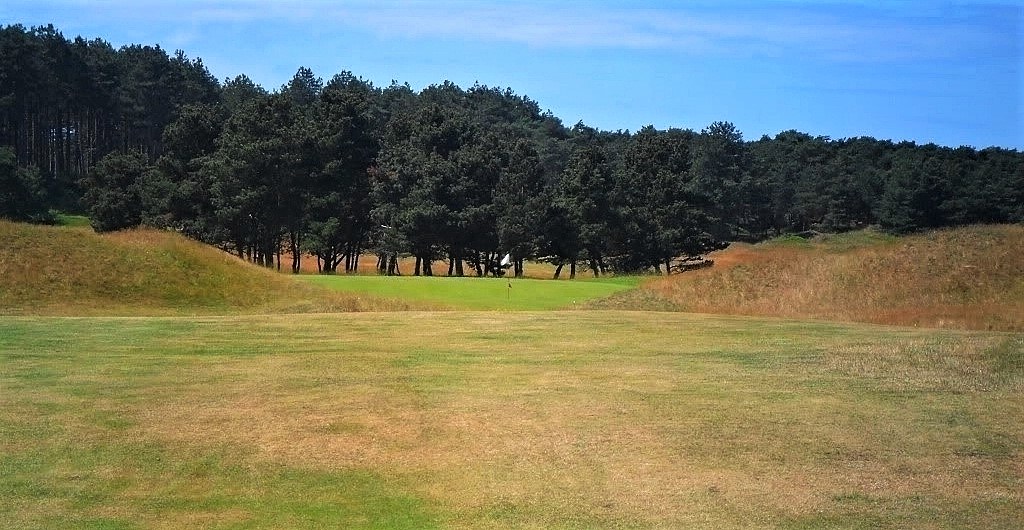
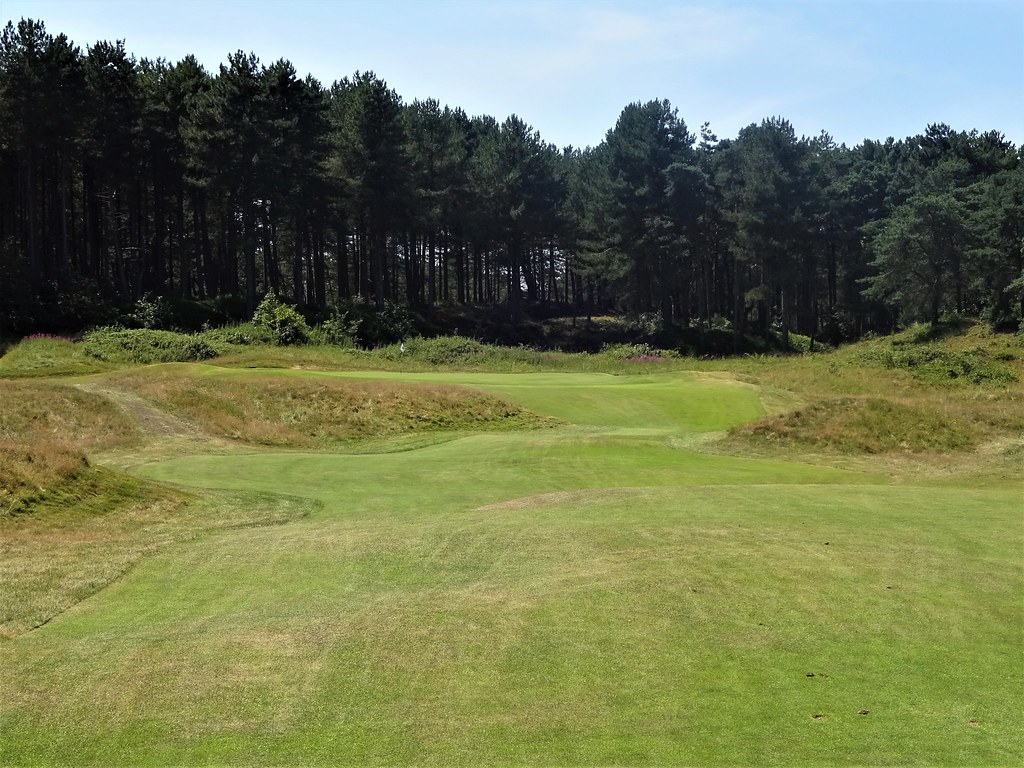
A short one-shotter, although fairly modern in how the hole feels, 16 is not without some merit. The green is bigger than it appears from the tee, but still a small target befitting its short yardage. Below is a look at the green well in front of the tee.
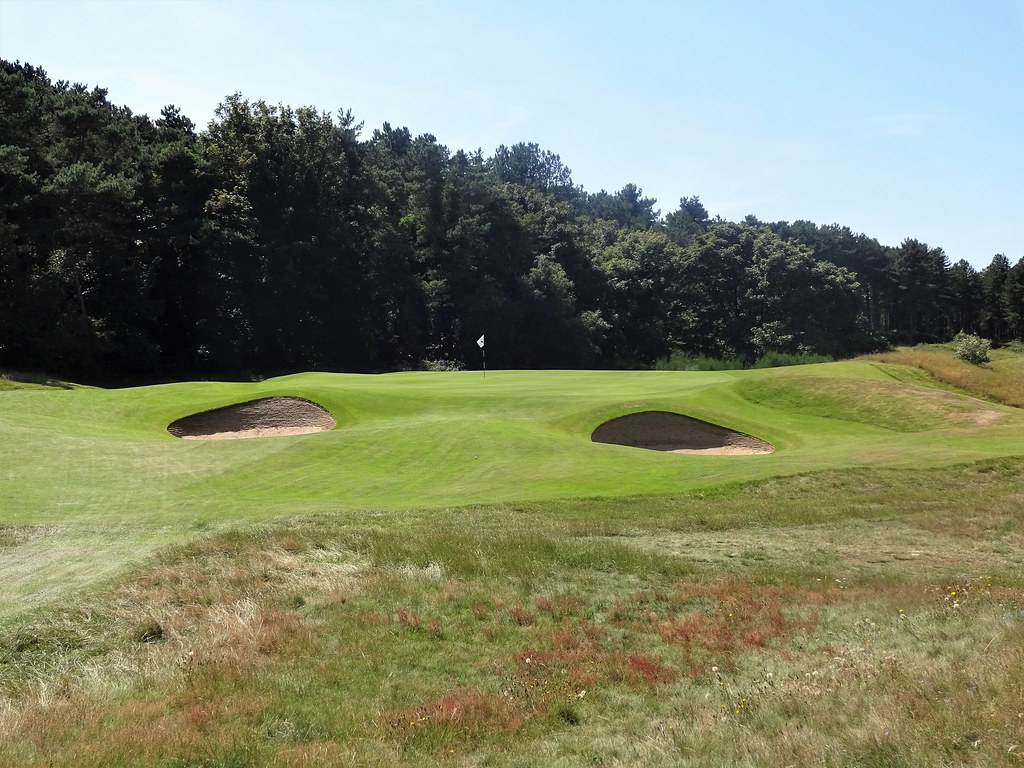
We once again return to the flat terrain for the finishing holes. 17 used to be played in the opposite direction as the 16th in 1912. The old 17th and the 18th tee are now housing. This last par 5 is not as compelling as the first two, but the reachable length combined with the difficult to hold green give it a twist. However, I wonder if this hole would be better served as a par 4 with a reconfiguration of the bunkering. A new bunker has been added up the right to thwart flat bellies. The approach.
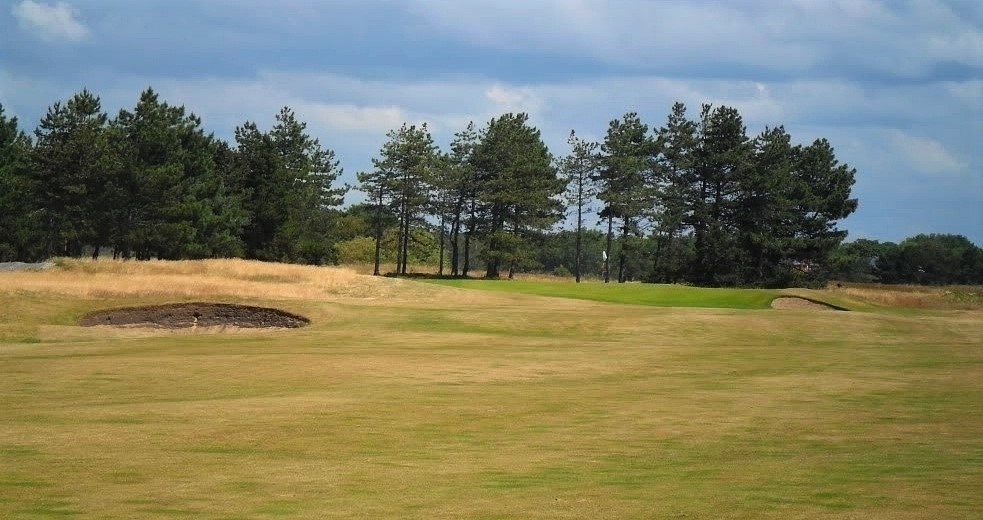
These flat holes remind me of Wallasey and Hoylake. They are good golf, but unlike much of the remainder of the course, bunkers are heavily relied upon to create the interest and challenge. Although, the 18th fairway bleeds beautifully into the old green causing depth perception difficulties. This tactic is especially effective on the last because the green is some 45 yards deep.
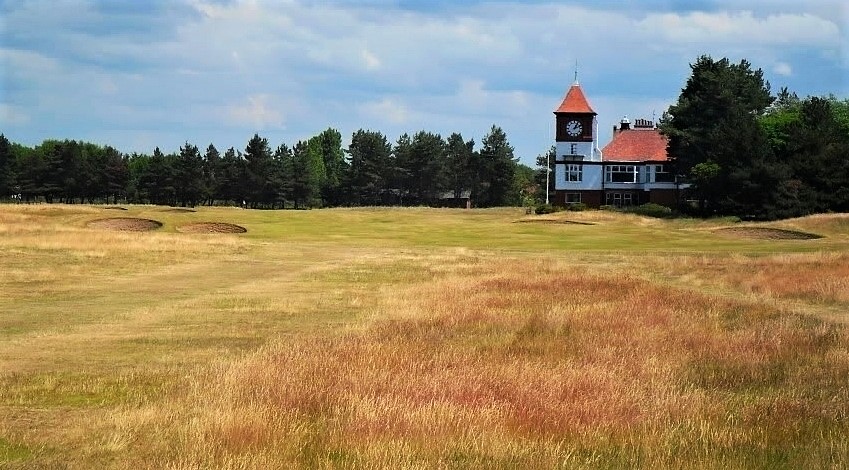
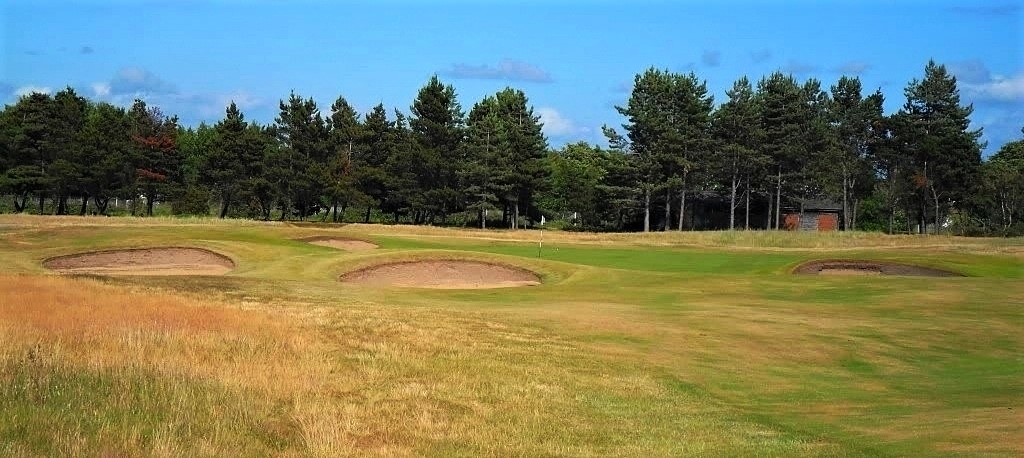
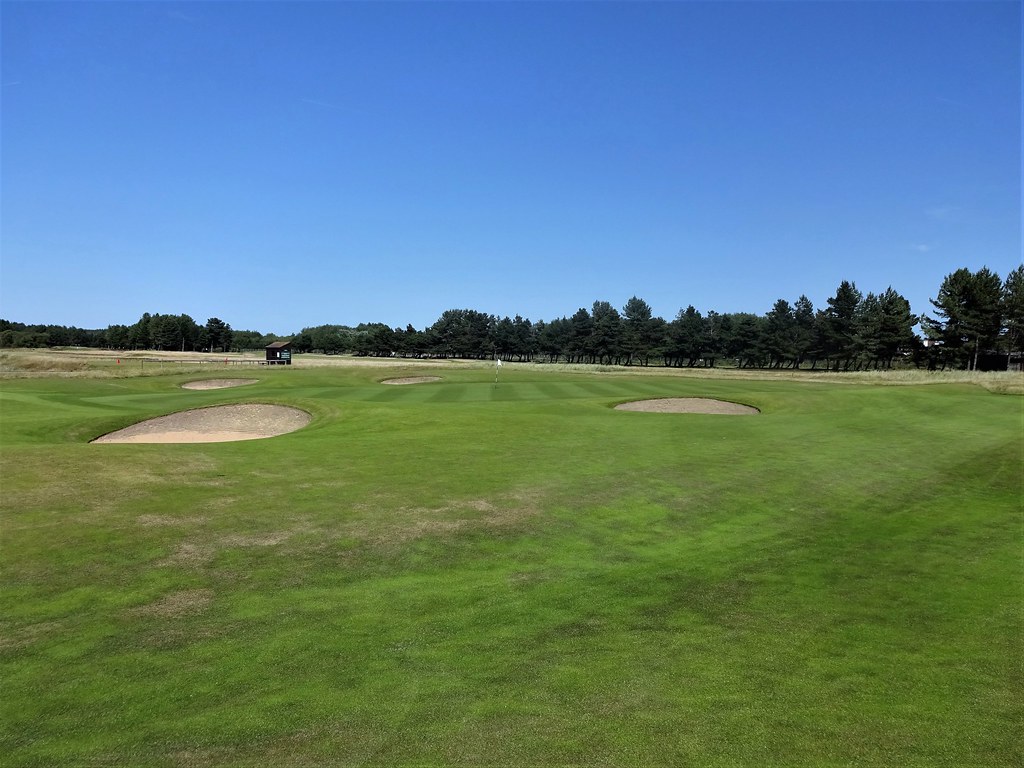
Formby has three main elements in its favour. First and foremost, the terrain is marvelously varied. All sorts of shots are required and this has to be the goal if a course of quality is to be built. Second, it isn't often mentioned, but Formby has an interesting set of greens which are tricky without being over-bearing. Finally, courses with different designers involved can be incongruous. While Formby had a host of architects who worked on the course, it still presents itself as a unified whole that hasn't in the least suffered for its disjointed design history. Its probably the case that that the consistent use of round pot bunkers ties the holes together stylistically. If I was going to nit pick, some trees could stand to come out and the course would probably be better served by a more dynamic style of bunkering.
While Formby isn't the most well known of the the glutton of fine links in the northwest of England, this author believes Formby to be the best course in northern England; just pipping Ganton, Hoylake & Birkdale to the post. A stop at Formby would grace any tour of England. My respect and enjoyment of the course and club is such that if there was a drivable par 4 or two I would be inclined to bump Formby up a star. 1* 2017
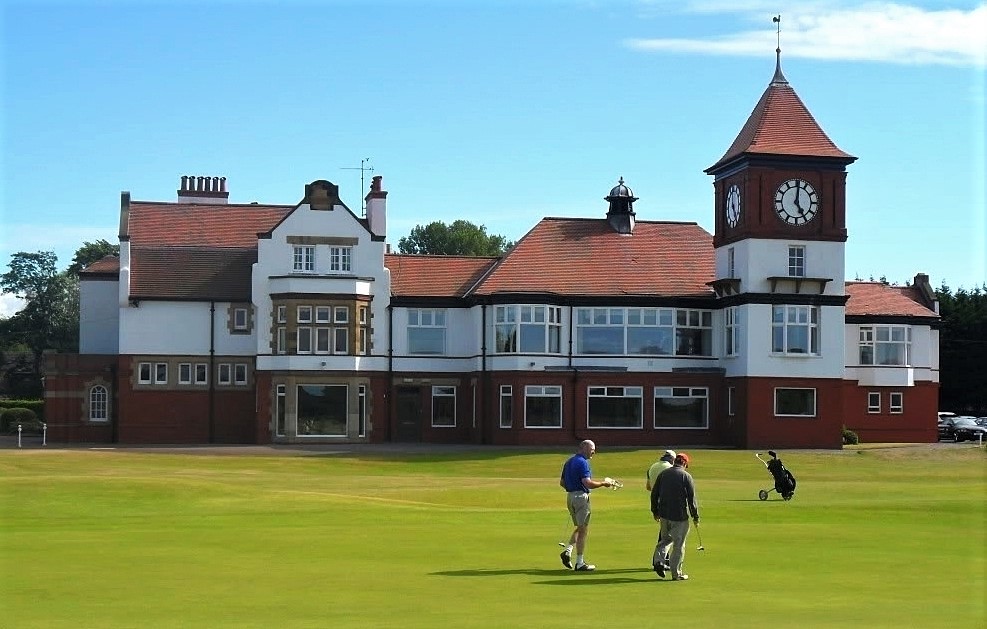
Formby Ladies
http://www.golfclubatlas.com/forum/index.php/topic,60714.msg1438944.html#msg1438944Ciao